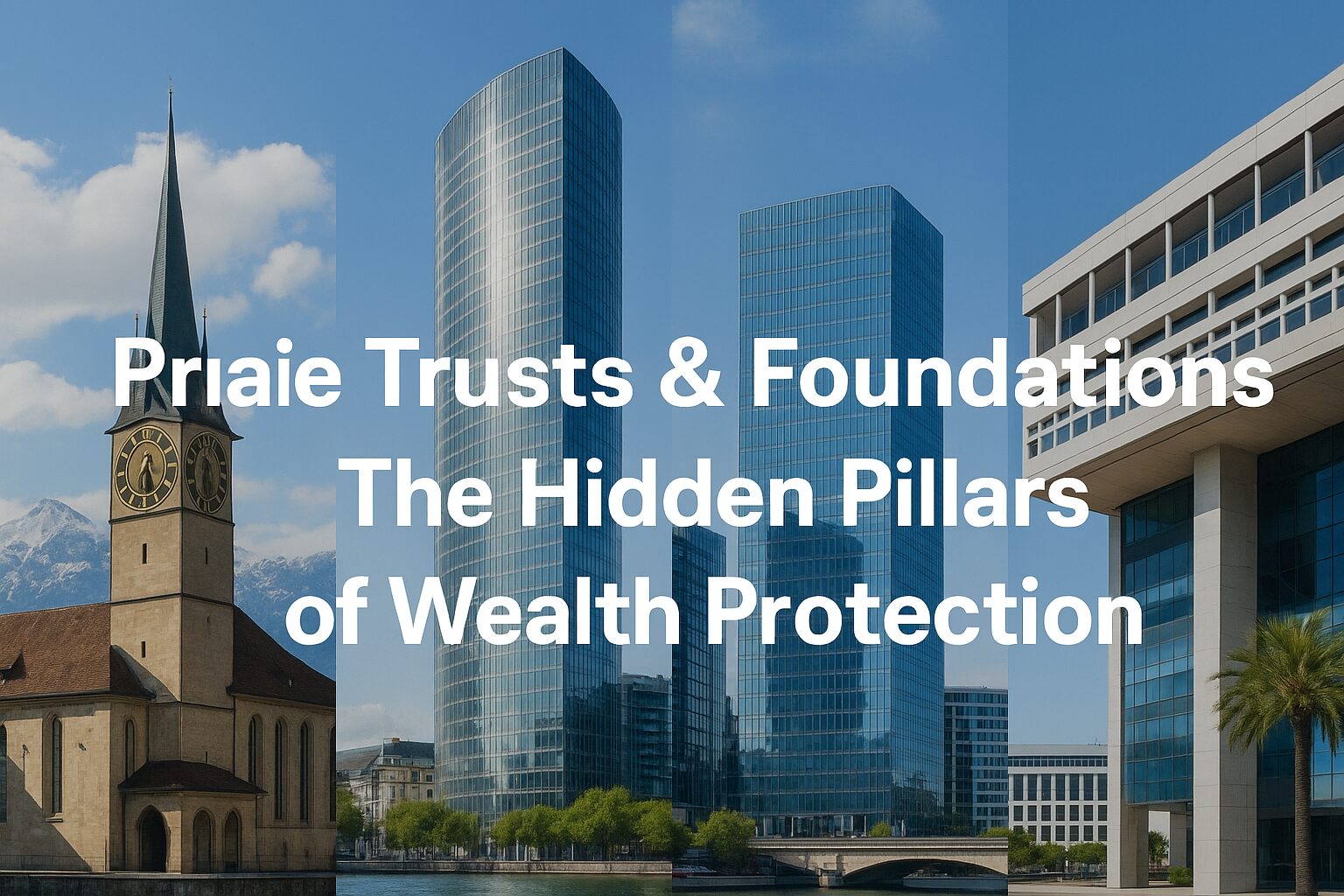Wealth Is More Than Numbers
When people think of wealth, they often picture numbers on a screen — account balances, investment portfolios, or property valuations. But for the super-rich, wealth is not simply about accumulation; it is about control, protection, and continuity.
A fortune is only meaningful if it can survive lawsuits, divorces, creditor claims, political instability, and even government overreach. That is why the ultra-wealthy build legal firewalls around their assets. These firewalls take the form of trusts and foundations — ancient yet evolving structures that quietly anchor the world’s largest fortunes.
For the ordinary investor, these tools may seem distant. Yet, the principles behind them — protection from risk, planning for the next generation, and ensuring independence from local volatility — are lessons that anyone can adapt.
The Concept of Asset Protection Trusts
A trust is a legal arrangement where a “settlor” transfers assets to a “trustee,” who manages them for the benefit of “beneficiaries.” While this sounds straightforward, in the hands of skilled lawyers, trusts become powerful shields against claims and seizures.
- Cook Islands Asset Protection Trust (APT):
Located in the South Pacific, the Cook Islands has built the world’s most famous APT laws. If someone sues you in another country, those judgments often hold no power in the Cook Islands. Creditors would have to litigate locally, under extremely strict time limits and high evidentiary burdens. This makes Cook Islands trusts nearly impregnable. - Nevis Trusts:
The Caribbean island of Nevis offers another popular version, with strong anti-creditor rules. Plaintiffs must post high bonds before filing claims, discouraging frivolous litigation. - Practical lesson: Even if you never create an offshore trust, understanding how the wealthy build “legal walls” reminds us of the importance of structuring assets beyond a single legal system.
Liechtenstein Foundations – The European Fortress
Liechtenstein, a tiny principality between Switzerland and Austria, is home to one of the oldest and most sophisticated asset protection systems: the Stiftung (foundation).
Unlike a trust, a foundation is its own legal entity. It holds assets for beneficiaries but operates under civil law, making it familiar to European families. Ultra-rich dynasties use Liechtenstein foundations to:
- Separate personal ownership from family wealth.
- Create long-term governance rules that survive multiple generations.
- Provide confidentiality with the backing of a stable, AAA-rated jurisdiction.
Foundations are especially effective for succession planning — ensuring that wealth is not broken apart by inheritance disputes but remains aligned with the founder’s vision.
Panama & Beyond – The Private Interest Foundation
Panama introduced the Private Interest Foundation (PIF) in 1995, blending features of both trusts and foundations. It allows global families to place assets into a foundation that is legally independent of them, yet still provides flexible control through “council members” and “protectors.”
- PIFs are frequently used to hold shares in companies, intellectual property, or even luxury assets like yachts.
- They offer privacy: founder names do not need to appear in public registries.
- Crucially, they are designed for multi-jurisdictional families — those with members living in multiple countries.
The Panama PIF shows how a small jurisdiction can create global impact by offering structures that bridge legal traditions.
Multi-Layered Structures – The Real Secret of the Ultra-Rich
For the ultra-wealthy, one structure is never enough. The real secret lies in layering:
- A Cook Islands trust might hold shares in a Panama foundation, which in turn owns property in London or New York.
- A Liechtenstein foundation could be the beneficiary of a Cayman trust, creating legal separation across borders.
- Assets may be split into different entities, so no single lawsuit or government action can reach them all.
This multi-layering strategy creates a legal maze that makes it extraordinarily difficult for outsiders to penetrate.
Lessons for Everyday Investors
While most people will never set up a Cook Islands trust, the principles are universally valuable:
- Separation is protection – Do not hold all assets in your personal name. Even a local corporate entity or family LLC adds a layer of defense.
- Plan for continuity – Trusts and foundations exist to preserve wealth beyond one lifetime. Ordinary investors can achieve this with careful wills, life insurance structures, or local trust arrangements.
- Think globally – Even small steps, like opening a multi-currency account or diversifying property across borders, apply the same philosophy as the ultra-wealthy.
The lesson is simple: wealth is not just built; it is defended.
Conclusion: The Hidden Pillars of Lasting Wealth
Trusts and foundations may not appear in flashy headlines, but they are the quiet engines of dynastic wealth. From the South Pacific’s impregnable Cook Islands trusts to Liechtenstein’s centuries-old foundations, and Panama’s flexible PIFs, these structures provide the legal armor that keeps fortunes intact across generations.
For the ultra-rich, they are indispensable. For the aspiring, they are blueprints for how to think about wealth — not just in terms of accumulation, but in terms of endurance.
Next Article Preview
In our next exploration, we’ll unlock the secretive world of Family Offices:
“Family Offices Explained – How the Ultra-Rich Manage Global Assets.”
You’ll see how dynasties organize entire teams of bankers, lawyers, and investment professionals under one roof. More importantly, you’ll learn how the family office model is evolving — from managing billions for old European families to helping new entrepreneurs and global nomads create flexible structures for their own cross-border portfolios.
